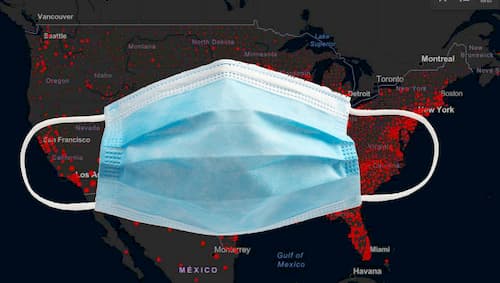
Over a year into the Covid-19 pandemic, life is slowly beginning to return to normal for many Americans. All adults are now eligible for vaccination, and, according to the CDC, over half have received their first dose. One-third are even fully vaccinated.
But several aspects of life remain interrupted. This is especially true for education: At the time of writing, U.S. schools are only partially open, affecting more than 77 million students nationwide.
Many states are taking steps to further open schools to be safe and effective for students and teachers alike. This includes implementing social distancing efforts and installing desk dividers as well as acrylic shields and acrylic sneeze guards for desks to reduce the spread of germs.
Despite these efforts, education remains interrupted for many children across the country. Where? We analyzed months’ worth of the most recent data from the US Census Bureau’s Household Pulse Survey to find out.
Where students have been most impacted by the Covid-19 pandemic
In our journey to find the answer, there were several data points we took into consideration:
- Percentage of students who are spending less time on education
- Percentage of students who see their teachers one day or less per week
- Percentage of students with canceled classes
- Percentage of students who always had access to a computer
- Percentage of students who always had access to the internet
The state where students continue to be most affected by the pandemic is West Virginia. The state’s rankings were high across the board, with an average of 8.8.
Although 79% of students in West Virginia had reliable access to a computer, just 62% always had access to the internet, the lowest rate in the country. This is a real problem as facetime with teachers is exceedingly rare – in West Virginia, one in three students spent one day or less per week with their teachers, the second-lowest rate in the country.
Over half of students (55%) spent less time on learning activities (#5). This isn’t surprising, given that 31% had classes canceled (#8).
Coming in just behind West Virginia is Alaska, with an average rating of 9.6. While it didn’t rank number one in any category, it was in the top ten for four of the five categories. Its highest rank was in the percentage of students with classes canceled (34%, #3), so it’s no wonder that over half of students in Alaska spent less time on education (53%, #10).
Alaska’s other top ten rankings: students spending one day or less with a teacher each week (19%, #9) and students with reliable internet and computer access (71%, #10 and 75%, #16, respectively).[content id=”79272″]
New Mexico took the third spot with an average ranking of 10. While only half of students were spending less time on educational activities and 78% had reliable computer access, high rankings in other categories didn’t bode well for the state.
Its highest rankings were in the number of students with classes canceled (35%, #2), students who always had reliable internet access (just 66%, #2), and the number of students who spent one day or less with a teacher every week (20%, #5).

The least impacted students
Students in North Dakota are the ones with their education least interrupted by Covid-19. With an average rank of 43.6, it ranked the best in three of five categories.
Just one in ten students spent one day or less with a teacher (#50), and 12% had classes canceled (#50). Unsurprisingly, not many reported spending less time on educational activities: just 36% (#45).
Even in the event of online schooling, their education could remain uninterrupted: 8 in 10 had reliable internet access (#50).
Following closely behind is New Hampshire, with an average ranking of 41.8. Less than half of New Hampshire students reported spending less time on educational activities (47%, #26), and just 10% had very little facetime with their teachers (#49). This makes sense, seeing as just 22% of students had classes canceled (#36).
New Hampshire students also have some of the most reliable technology access in the country: 79.6% always have internet access, and 85% always have access to a computer (both #49).
The third-least impacted students are those in Wyoming, where just 12.5% of students had classes canceled (#49) and only 10.8% saw their teachers one day or less each week (#49). Despite these low rates, 47% spent less time on educational activities (#26).
Regional trends
Data suggests that the level of education disruption experienced by students varies by region. For instance, exactly half of the states most disrupted by Covid-19 are in the south: West Virginia (#1), Texas (#6), Kentucky (#7), Alabama (#8), and Louisiana (#9). Students in these states spent some of the least amounts of time with their teachers (all ranked in the top 10) and a majority had unreliable computer and internet access.
As a whole, states in the northeast appear to have experienced the least disruption in education. Just one state appears in the top 25 states most affected (Vermont, #20), while the rest fell into place in the bottom 20. In fact, northeastern states make up almost half of the states least affected: Rhode Island (#41), Massachusetts (#45), Connecticut (#47), and New Hampshire (#49). What did they all have in common? Low rates of canceled classes and excellent access to computers and wifi.
States in the midwest made up a majority of the least affected states as well: Minnesota (#40), Iowa (#42), Wisconsin (#43), Nebraska (#44). Like their northeastern counterparts, they too had low rates of canceled classes and a majority of students saw their teachers at least once per week.
Source: Showcase Acrylics






